Join us as we take a closer look at 14 different species of birds of prey that you can spot in Scotland.
With talons as sharp as the thistles and eyes as keen as Sherlock Holmes, Scotland’s birds of prey reign supreme. Whether you’re in the rugged Highlands or the tranquil islands, these winged wonders are a testament to Scotland’s natural splendor.
Let’s take a look at 14 different species of birds of prey that you can spot in Scotland!
1. Barn Owl (Tyto alba)
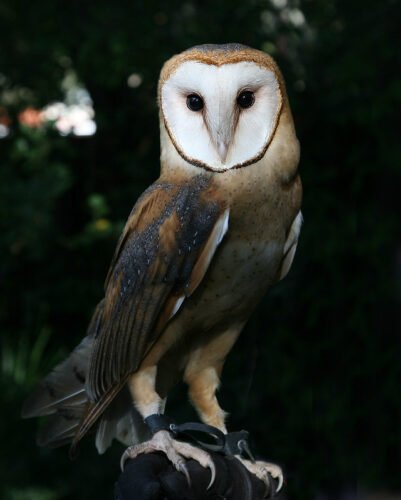
Say hello to the ghostly beauty of the night, the Barn Owl. With a heart-shaped face, golden-buff back and wings, and pure white underparts, it’s a sight to behold. They favor open countryside, farmlands, and barns for nesting, and they have a preference for hunting small mammals, especially voles. Their silent, ghostly flight is almost supernatural. They’re monogamous and courtship involves screeching and aerial displays. Find them throughout Scotland, and some of the best places include agricultural areas with old barns.
2. Eurasian Hobby (Falco subbuteo)
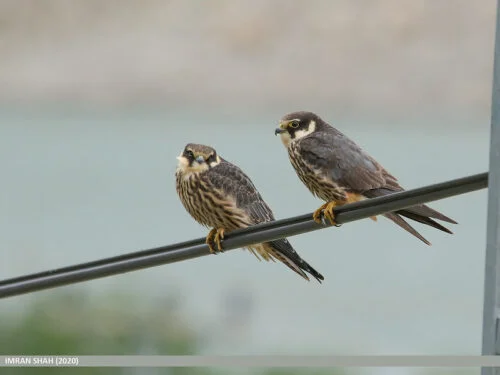
Like a nimble aerial acrobat, the Hobby sports slate-grey back, red underparts, and a white face with a black moustache. They favor open countryside with scattered woodland. With a taste for insects and small birds, they catch their prey in mid-air. Their flight is swift and acrobatic. They are summer visitors to Scotland and migrate to Africa for the winter. Courtship involves high-speed aerial pursuits. Spot them in southern Scotland during the summer months.
3. Rough-legged Buzzard (Buteo lagopus)
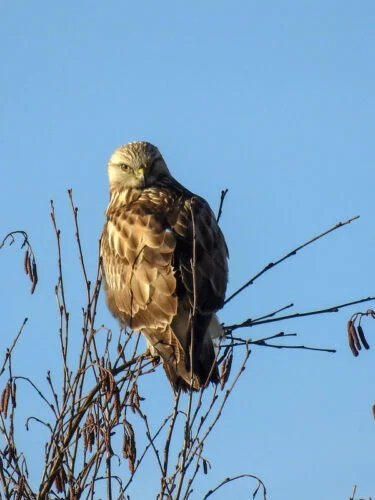
Bringing a taste of the Arctic, we have the Rough-legged Buzzard. It’s similar to the Common Buzzard but has a more buffish plumage and feathered legs. They love open country and marshes. They feed mainly on small mammals and can be seen hovering like a Kestrel. They are rather social, and you may see them in loose groups. Courtship displays are less elaborate. They are winter visitors from the Arctic, so look for them in northern Scotland, such as Caithness and Sutherland.
4. Eurasian Sparrowhawk (Accipiter nisus)
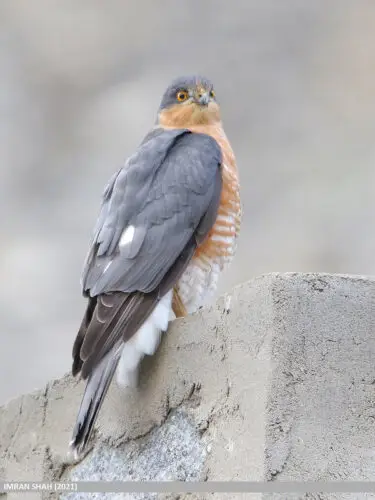
Introducing the stealthy fighter jet of the woods, the Sparrowhawk! This compact bird, adorned in a coat of bluish-grey and orangey-brown, has a particular fondness for small birds. With its exceptional agility, it whizzes through dense woodland, snatching unsuspecting birds. Solitary and elusive, the Sparrowhawk is like a forest ninja. Their courtship involves impressive aerial displays and gift-giving (how romantic!). Sparrowhawks don’t go on long migrations, and you’ll find them throughout Scotland. Venture into the woodlands, and keep your eyes peeled for the woodland phantom!
5. European Kestrel (Falco tinnunculus)
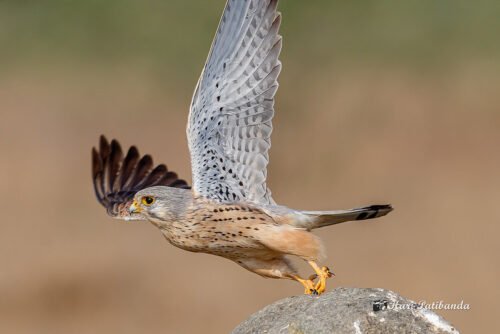
Behold the Kestrel, the hover-master of the avian world. With a chestnut brown back and tail, and a distinguishable facial pattern, this raptor is an expert at hovering in mid-air to spot its prey, mainly consisting of mice and voles. They prefer open habitats like grasslands and moors. Courtship involves aerial displays and feeding by the male. Most Kestrels remain in Scotland all year, with some moving around in search of food. Check out the open countryside throughout Scotland to spot them.
6. Hen Harrier (Circus cyaneus)
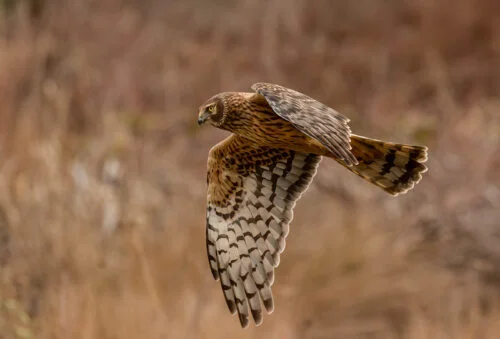
Dive into the moors to meet the graceful Hen Harrier, adorned in a greyish-blue plumage for males and brown for females, complete with an owl-like face. They dance over the heather-clad moors and grasslands, hunting small mammals and birds. Their flight is a mesmerizing combination of flapping and gliding. Males perform a captivating sky-dance during courtship, sweeping and looping through the air. They usually migrate to lowland areas during winter. Head to Orkney or the Hebrides to spot these sky dancers.
7. Red Kite (Milvus milvus)
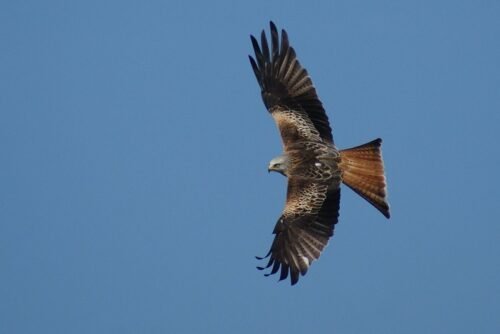
With a russet plumage, forked tail, and a wingspan of nearly two meters, the Red Kite is like an autumn leaf gliding through the air. They love the open countryside with scattered trees. Dining on carrion, worms, and small mammals, Red Kites are the clean-up crew. They have an elegant flight with lots of soaring, twisting, and turning. They’re mostly monogamous and engage in aerial courtship displays. They can be seen year-round in Scotland. For the best Red Kite ballet, head to the Argaty Red Kite Centre near Doune.
8. Tawny Owl (Strix aluco)
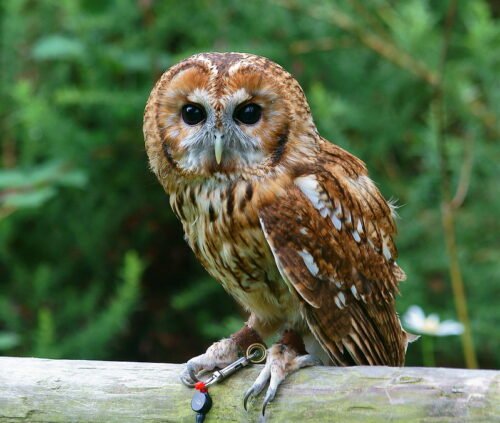
The woodland phantom, Tawny Owl, has a rounded body, a tawny-brown plumage, and black eyes. They prefer woodlands and large gardens, hunting small mammals and birds at night. They have a distinctive “twit-twoo” call. Tawny Owls are mostly sedentary. They can be seen throughout Scotland; just follow their haunting calls at night.
9. Common Buzzard (Buteo buteo)
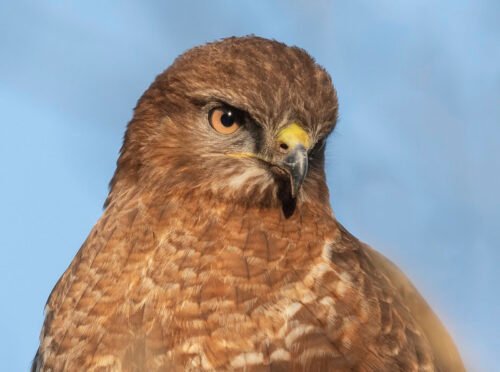
Buzz, buzz! It’s not an insect; it’s the Common Buzzard! With a rich brown plumage and broad wings, this bird is a common sight soaring in the Scottish skies. They prefer woodland edges and open fields where they can hunt small mammals and birds. Their hunting style is more of a relaxed glide and a sudden pounce – surprise! They’re not big travelers, and are quite social, often seen in groups. Courtship involves soaring, diving, and mutual preening – like a day at a spa. Keep your eyes on the skies almost anywhere in Scotland to spot them!
10. Peregrine Falcon (Falco peregrinus)
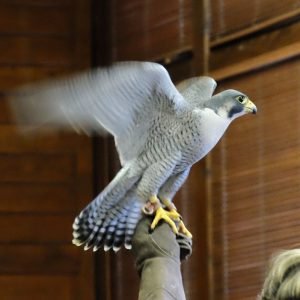
The Peregrine Falcon, oh la la! Imagine James Bond as a bird – robust, dashing with a blue-grey back, and an expert in high-speed chases. These raptors nest on cliffs and crags and have a taste for pigeons and waders, which they catch mid-flight with acrobatics that would make a trapeze artist jealous. During nesting, they’re fierce and protective – Bond always protects his assets. They aren’t big on migration, but some might venture south for the winter. To witness the 007 of the bird world, head to the Scottish cliffs and prepare to be shaken, not stirred!
11. Northern Goshawk (Accipiter gentilis)
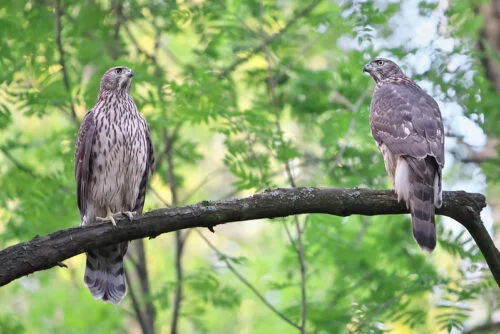
Enter the Goshawk, a secretive and fierce bird of prey. Resembling a large Sparrowhawk, it has slate-grey feathers and piercing orange-red eyes. They love dense forests, where they hunt birds and mammals with rapid, powerful flight. They are elusive, often giving away their presence through alarm calls of other birds. Courtship involves aerial displays and calling. Goshawks can be spotted in the dense forests of the Scottish Borders.
12. Merlin (Falco columbarius)
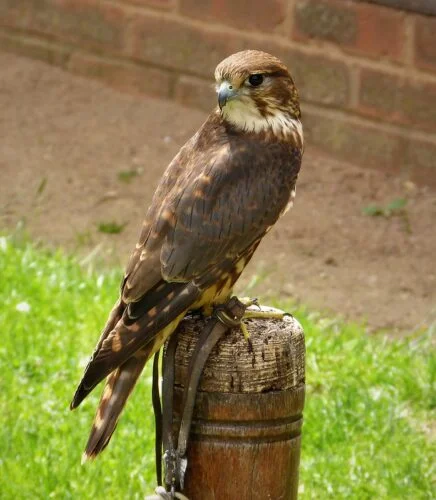
Don’t be fooled by its size; the Merlin is a pocket rocket! This small falcon is bluish-grey with a dark band across its eyes, like a little bandit. They favor the moorlands for nesting and hunting small birds. With rapid, low-level flights, they’re like mini drag racers of the air. They don’t form large colonies, but during migration, you might see groups of them. They often migrate to southern Europe for winter. Courtship involves food exchanges and aerial acrobatics. The upland moors of Scotland are where you’d likely encounter them.
13. Osprey (Pandion haliaetus)
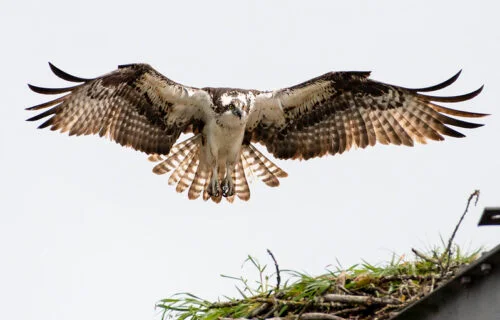
Meet the fisherman of the Scottish skies – the Osprey! With a wingspan of around 1.6 meters and a white head, these birds have a taste for fish. They set up home near lakes and rivers, and their fishing technique is worth an Olympic dive – they hover and plunge feet-first into the water. Ospreys are the solitary fishermen, focused and calm. Their courtship involves displays and calls that would put an opera to shame. Come winter, and they’re off to sunny Africa. For an osprey rendezvous, head to Loch Garten in Abernethy Forest.
14. Golden Eagle (Aquila chrysaetos)
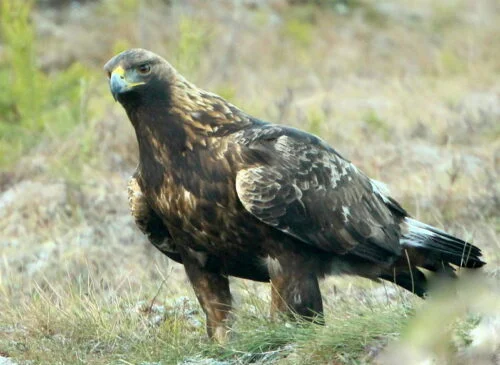
Ah, the Golden Eagle, with its wingspan over 2 meters, it’s the royal cloak fluttering over the Highlands. Clad in golden-brown feathers with a distinctive golden nape, these birds are the Highlanders, favoring wild open moorlands and mountains. They are connoisseurs of rabbits, hares, and grouse, and with their ‘soar-and-swoop’ technique, they swoop down like a Scottish warrior in a kilt. Mostly solitary, except in the breeding season, their courtship is an aerial ballet. They mostly stick to their Scottish homelands, though some younglings might wander down to England. The Isle of Mull is the place to be if you want to witness their majesty.
